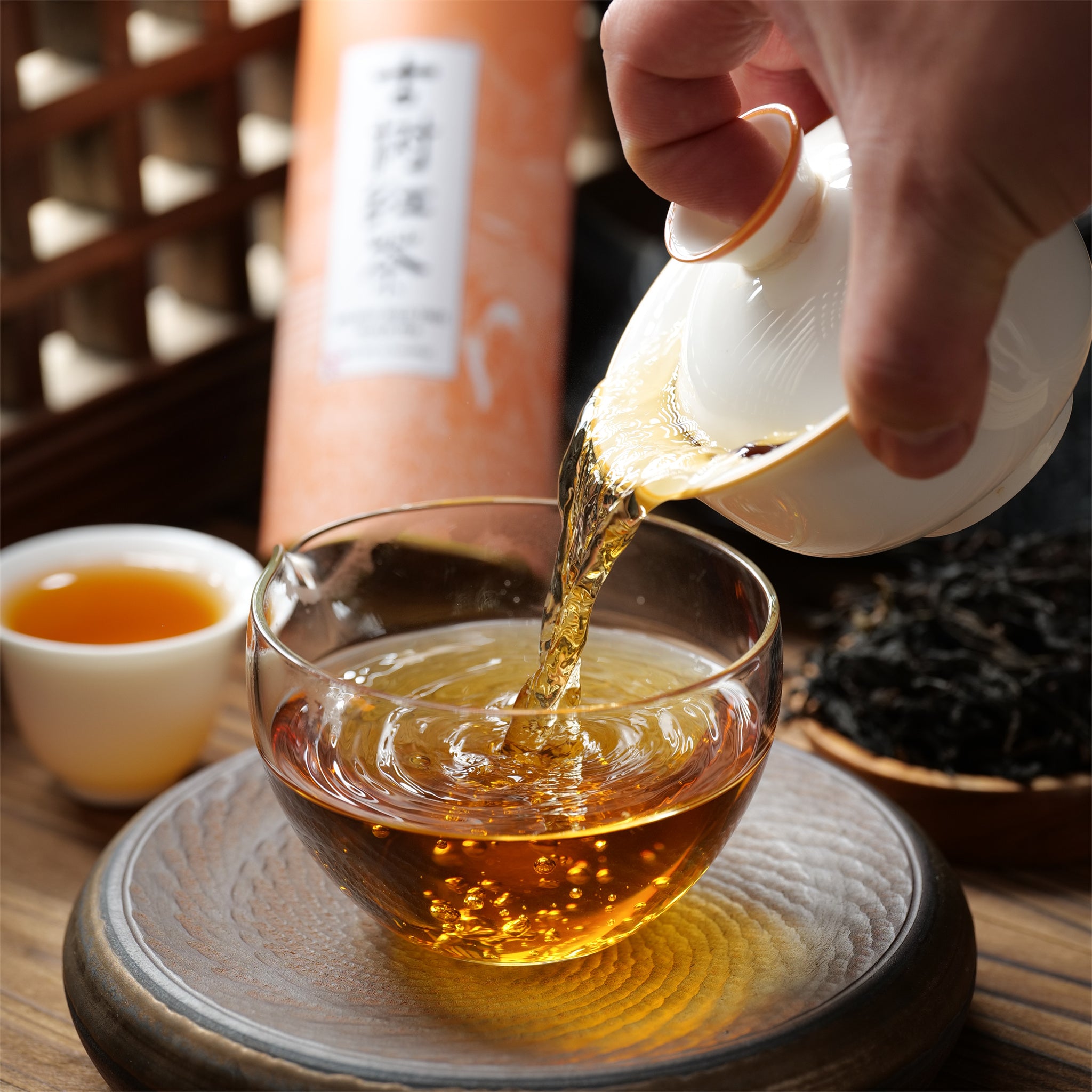The Charm of Yunnan's Ancient Tree Red Tea

In the vast lands of Yunnan, grows a unique kind of red tea—Dianhong. This red tea stands out, not following the common choice of using small or medium-sized leaf varieties for red tea production but instead opting for large-leaf species. This selection bestows Dianhong with distinctive characteristics: tightly curled leaves with a robust size, a deep and glossy color, a bright red brew, a rich aroma, and a full-bodied flavor. Remarkably, this large-leaf red tea can be brewed seven to eight times, surpassing the endurance of many other red teas.
The uniqueness of Dianhong lies in its raw material—the large-leaf tea trees native to Yunnan. Thriving in Yunnan's unique ecological conditions, these trees develop a distinctive style. The well-known Pu'erh tea is also made from these large-leaf varieties. Rich in polyphenols, catechins, and the potential for forming theaflavins, these leaves are ideal for producing both red and Pu'erh teas, which are known for their fermentation-induced golden hue.
Among the many Dianhong teas, I have a special fondness for ancient tree red tea. This tea is not only made from the large leaves of ancient tea trees but also embodies the essence of time. Some enthusiasts even handpick leaves from wild ancient trees to make red tea, infusing it with a wild, tamed flavor. A particular favorite of mine comes from Yunnan's Kezhuni mountain, where abundant rainfall and mist contribute to thick leaves and robust buds. The tea made here, with its bright red brew and visible golden tips, fully showcases the unique charm of the land's tea leaves.
One of the great advantages of red tea is its convenience—ready to brew and enjoy at any moment, without compromising on taste. On business trips, ancient tree red tea is an essential travel companion. In hotels, a simple glass cup suffices to brew a fine cup of red tea. When time allows, I prefer brewing with a gaiwan or a Yixing clay pot, enhancing the tea's aroma while preserving its richness through the brewing process, offering a delight for both taste and smell. The ancient tree red tea brewed in a Yixing pot captivates with its subtle fragrance, sweet taste, and lingering aftertaste, unforgettable to any tea enthusiast.
The widespread affection for red tea may well be attributed to its color—red—deeply resonant within the Chinese cultural context. Red symbolizes passion, celebration, auspiciousness, and good omens. The hue of ancient tree red tea is not an overpowering red or vivid purple but a perfectly balanced, clear, and bright red, making it stand out among the six major tea categories. The red of ancient tree red tea brings a sense of calm and depth, offering visual warmth.
In early autumn, a cup of ancient tree red tea from Yunnan can bring a sense of comfort and warmth to both body and soul. As the third infusion touches the palate, one feels enveloped in warmth, initiating a smooth dialogue between the throat and the body, with limbs like thirsty saplings finally receiving long-awaited nourishment, relaxing into the pleasant ambiance. At its richest, the tea is like liquid silk, gently flowing down the throat, permeating the heart, and spreading warmth from the inside out, warming the eyes, hands, and heart, leaving behind a clear mind and a deeply moisturized feeling.
